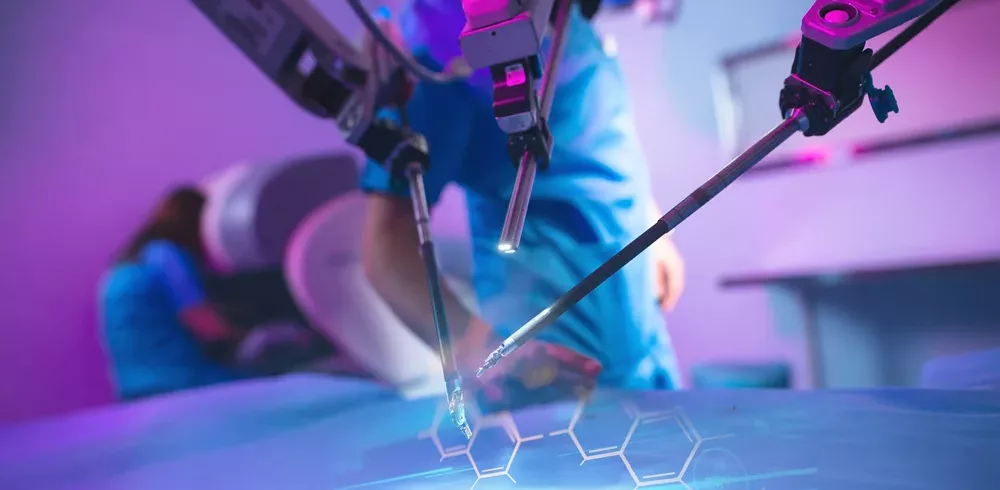~The crucial role of connectors in shaping the future of medical robots ~
Electrical connectors play a critical role in medical robots by facilitating the transmission of power, signals and data between various components. They ensure seamless communication and coordination, enabling the robot to perform complex tasks accurately and efficiently. Here, Isaac Noble, European product manager at connector specialist PEI-Genesis, delves into the role of connectors in medical robots.
According to the International Federation of Robotics, the total number of service robots sold for professional use increased by 48 per cent in 2022 to 158,000 units globally. When it comes to the most popular applications, medical robots came in third after logistics and hospitality.
A medical robot is a specialised robotic system designed for use in various medical applications, ranging from surgery and rehabilitation to diagnostics and telepresence. These robots are developed to assist healthcare professionals, improve the accuracy of medical procedures, enhance patient outcomes and provide innovative solutions in the field of medicine. Medical robots can take on different forms, functions and levels of autonomy, depending on their intended purpose.
In 2000, the FDA approved the use of the da Vinci Surgical System in general laparoscopic surgery, followed by approvals for other systems, including radiation therapy and reconstructive surgery. In the future, with the development of generative AI and machine learning, autonomous robots could perform remote surgery or predict disease recurrence and progression.
Connectivity is paramount to ensuring medical robots work accurately and new medical developments are successful. Due to the sensitive nature of medical robots, electrical connectors need to meet specific standards, outlined below.
Mechanical durability
Robotic systems involve repetitive movement, vibrations and mechanical stress. Connectors used in these systems need to be robust enough to withstand continuous use without failure, while ensuring seamless connectivity and uninterrupted power transmission during critical procedures.
Similarly, connectors contribute to the incorporation of redundancy and fail-safe mechanisms, minimising the risk of system failures during surgery or diagnostic processes. Redundant connectors and backup systems ensure continuity in case of unexpected issues, enhancing the overall safety of medical robotics.
Size and weight constraints
In medical applications, space and weight are often limited, meaning that connectors need to be compact and lightweight to fit within the robotic system. Smaller, more durable connectors allow for intricate designs and improved functionality. A compact design is also essential for ease of integration and to prevent interference with the robot’s movements during procedures.
Connectors also contribute to the modular design of robots, allowing for easier upgrades and maintenance. They facilitate the plug-and-play integration of new modules, promoting flexibility and adaptability in the rapidly evolving field of medical robotics.
Electrical performance
Connectors must maintain constant electrical performance, reducing energy loss and heat generation. They should also minimise signal loss and crosstalk to ensure accurate data transmission.
At the same time, medical robots often use various electronic devices, and connectors must be designed to minimise electromagnetic interference (EMI) and ensure compatibility with other medical equipment in the vicinity. This is crucial to prevent disruptions in communication and maintain the accuracy of diagnostic and surgical procedures.
Sterilisation
As they are often used in surgical environments, connectors must be designed to withstand frequent sterilisation processes. Compatibility with autoclaving, chemical disinfection or other sterilisation methods is also crucial for maintaining a sterile environment during medical procedures.
Connectors need to be made from materials that are resistant to sterilisation techniques. Stainless steel is a popular choice due to its excellent corrosion resistance, durability and ability to withstand high temperatures. At the same time, medical-grade plastic like Polyether ether ketone (PEEK) and polyphenylsulfone (PPSU) are known for their resistance to chemicals, heat and moisture.
Connectors are the unsung heroes of medical robotics, serving as the lifeline for communication, power distribution and data transmission within these advanced systems. As medical robots continue to evolve, connectors will play an increasingly vital role in ensuring precision, reliability, and safety in healthcare applications. The ongoing innovations in connector technology will undoubtedly contribute to the continued growth and success of medical robotics, ultimately benefiting both healthcare professionals and patients alike.
At PEI-Genesis, we work closely with connector manufacturers and medical facilities to ensure we offer the most optimised solutions, customised to the needs of each application.
To find out more about our range of medical-grade connectors, visit www.peigenesis.com/medical.
Manufacturing & Engineering Magazine | The Home of Manufacturing Industry News















